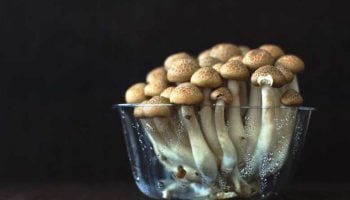The Question: How Can We Use Anecdotal Reports to Inform Psychedelic Science?
This year, a group of leading psychedelic scientists wrote about the urgent need to figure out how mental health practitioners can reliably share helpful anecdotes with one another about complex cases.
After all, therapists managing the global mental health crisis are in a conundrum: many patients suffering from hard-to-treat conditions, such as treatment-resistant depression or chronic PTSD, don’t have time to wait years for extensive clinical trials to determine whether new treatments can help them.
At the moment, doctors get around this problem by connecting with one another at conferences, in blog posts, or simply over coffee, to discuss solutions they’ve seen of difficult cases.
However, doctors can be held legally liable for suggesting treatments that are not backed by large-scale studies, even if both patient and doctor want to test it out.
Third Wave researcher Gregory Feinstein presents a solution to this dilemma, by applying statistical techniques used for group studies but on a single individual: Susan*, who reportedly found a novel way to prevent severe depression with low doses of psilocybin.
Feinstein’s research methodology takes into account the way doctors normally interact with patients: they ask about the patient’s history and use this anecdotal information (also known as “real-world data”) to inform subsequent treatment decisions. In Susan’s case, she tried many different modalities, from antidepressants to meditation. But nothing quite worked like magic mushrooms.
Is it possible that Susan’s story is just a case of dumb luck? Maybe it was all placebo effect, or maybe she just happened to get better anyway around the time she tried psilocybin.
The question becomes: How can we determine if psilocybin mushrooms really worked for Susan, or if it was simply a coincidence or placebo?
By carefully analyzing the real-world data from Susan’s life, we can arrive at an informed answer to this question.
*Susan is a pseudonym used to protect the individual’s privacy.

Real-World Data: A Different Approach to Psychedelic Science
Real-world data is collected through observational reporting, and operates beyond the typical constraints and requirements (time, cost, large sample sizes, double-blind and/or randomized control trials, etc.) of clinical research. A number of researchers, including the Food and Drug Administration, are exploring the use of real-world data as an alternative to clinical studies.
Through a real-world data research model, a single case report can yield statistically significant findings and contribute meaningfully to scientific literature—while avoiding many of the logistical challenges that come up in clinical studies.
In the case of Susan, we know she is an individual in her 60s who regularly consumes tiny amounts of psilocybin to treat her severe depression. This practice of microdosing allows one to experience the subtle benefits of psychedelic medicines while maintaining everyday functioning, in contrast to the more intense journeys or mystical experiences induced by full-dose hallucinogens.
Previously, Susan had tried seven years of antidepressants, but ultimately transitioned off of them due to undesirable side effects. Susan keeps detailed notes on her psilocybin microdosing regimen, and this documentation is an important source of real-world data.
Real-World Data vs. Clinical Studies: What’s the Difference?
Real-world data and clinical studies offer different lenses through which to evaluate the same question.
A single patient who tries different treatments across time (real-world data) is considered mathematically equivalent to a group of patients who take a treatment all at the same time (clinical study). In both cases, multiple data points are available. Within clinical research, multiple data points represent multiple individuals. Within real-world data, multiple data points represent multiple timestamps within a single individual’s life.
Whereas clinical studies require randomized control trials of large groups, real-world data uses a single patient’s history as the control variable. If many people try the same treatment and they all experience similar results, that is important scientific information. If one person tries a variety of treatments and then a single new treatment creates notable results, that is also important scientific information.
Analyzing Real-World Data on Psychedelics: Coincidence… or Statistically Significant?
Let’s apply the real-world data model to Susan’s case. For the past two years, Susan has microdosed for about 10 days at a time, every two months. The two-month break allows for her tolerance to reset, so that the psilocybin microdoses retain their efficacy. Susan reports feeling better on the microdosing days. However, every one to three months, she experiences depressive episodes that last between two and five days.
How do we discern if Susan’s improved mood on dosing days is coincidental, or if it is statistically significant? (Statistical significance means that the results are likely attributable to a specific cause, and not likely to have occurred by chance alone.)
First, we need to determine the likelihood of a depressive episode overlapping with a microdosing day.
In the quantitative case report detailing Susan’s experience, researcher Feinstein ran 15,000 simulated scenarios to figure out how often randomly chosen depression days would occur at the same time as a microdosing day. In those 15,000 simulations, depressive episodes and microdosing days overlapped 84% of the time. In reality, Susan reported that depressive episodes and microdosing days never overlapped.
Based on the discrepancy between what could have happened and what actually happened, we can interpret that there’s an 84% chance that small doses of magic mushrooms were alleviating Susan’s depression. Meanwhile, there’s a 16% chance that Susan’s improved well-being was a pure coincidence and had nothing to do with the microdoses at all.

Positive Effects of Microdosing Psychedelics: “Real” or Placebo?
It is possible that those who report beneficial effects from microdosing are experiencing a placebo effect. How do we know if Susan’s mental state improved due to the psilocybin microdoses, or due to the expectation that she would feel better after consuming the microdoses? The answer is complex, and we can look to existing psychedelic microdosing research for guidance.
In a 2021 study by Imperial College London—the largest placebo-controlled psychedelic study to date—191 participants consumed either placebo pills or psychedelic microdose pills (LSD or psilocybin) across a four-week period. While the microdosers reported better outcomes (such as improved psychological well-being, cognitive function, and satisfaction with life) in comparison to the placebo group, this was not a statistically significant difference.
What is worth highlighting, though, is that follow-up treatment outcomes were significantly better when participants believed they had consumed a psychedelic microdose, regardless of whether they had taken a placebo or a microdose. This finding suggests that each participant’s belief about what they were consuming affected their experience more than the actual substance they consumed. In 72% of cases, participants guessed correctly whether they were in the placebo or microdosing group.
What does this data tell us? It would be overly simplistic to conclude that all psychedelic drugs are placebos and do not actually produce significant treatment results. Rather, as Feinstein states, “At any given time, there is a probability that some of the effects from a psychedelic will be due to purely internal, psychological mechanisms. Not everyone falls victim to placebo, and even those who do will not fall victim every single time.”
What the research demonstrates so far is that microdosing psychedelics—or the belief that one is microdosing psychedelics—tends to produce positive treatment outcomes. This highlights the possibility that one’s belief system and one’s engagement with psychedelic substances are in constant relationship with one another—that is, to experience the benefits of microdosing, one has to believe that the medicine will work in the first place.
Instead of dismissing the placebo effect, we can interpret that the medicine induces certain pharmacological processes (such as the activation of serotonin receptors in the brain), while the person brings the appropriate psychological mindset. As stated in this 2021 study, it is worth exploring how “belief is an active component of the psychedelic treatment model, rather than a problematic confound.”
The Future of Psychedelic Science: Where We Go From Here
High-quality psychedelic research plays an essential role in shifting public opinion, easing legal restrictions, informing safety protocols, and increasing access to psychedelic-assisted psychotherapy and medicines such as LSD (lysergic acid diethylamide), psilocybin, MDMA, cannabis, DMT, and ayahuasca. Real-world data, such as Susan’s microdosing experience, offers a promising alternative, or complement, to the time- and cost-intensive approach of clinical microdosing studies.
Thoughtful analysis—and collaboration between researchers, clinicians, therapists, and other members of the psychedelic community—allows us to transform anecdotal reports into meaningful data points within the scientific field. As the psychedelic renaissance widens its scope and more data becomes available, future research should continue to explore what it takes for a psychedelic medicine (in low and high doses) to actually “work” and what roles coincidence, expectation, and belief play within this context.
Want to dive into psilocybin and lsd microdosing? Curious to learn the difference between the James Fadmin protocol and the Paul Stamets stack? Interested in the neuroscience of psychedelic therapy and how psychiatry is looking at psychedelics through a new lens? When you join Third Wave’s Microdosing Course, you gain access to tons of microdosing education, the community forum with hundreds of other microdosers, plus video interviews from leaders in the psychedelic space.







I’m new and trying to figure out how to use these for ptsd and anxiety with micro dosing.